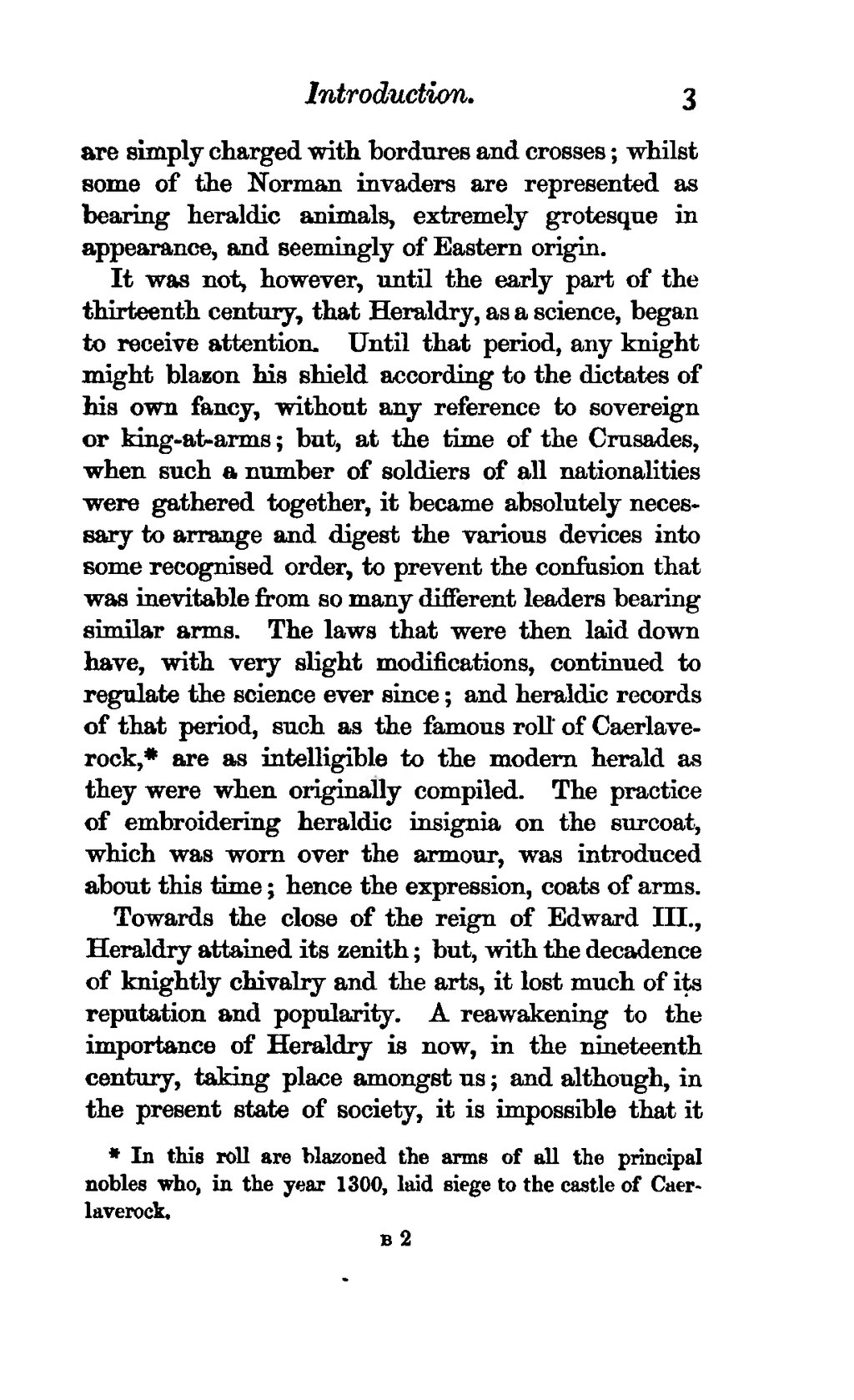are simply charged with bordures and crosses; whilst some of the Norman invaders are represented as bearing heraldic animals, extremely grotesque in appearance, and seemingly of Eastern origin.
It was not, however, until the early part of the thirteenth century, that Heraldry, as a science, began to receive attention. Until that period, any knight might blazon his shield according to the dictates of his own fancy, without any reference to sovereign or king-at-arms; but, at the time of the Crusades, when such a number of soldiers of all nationalities were gathered together, it became absolutely necessary to arrange and digest the various devices into some recognised order, to prevent the confusion that was inevitable from so many different leaders bearing similar arms. The laws that were then laid down have, with very slight modifications, continued to regulate the science ever since; and heraldic records of that period, such as the famous roll of Caerlaverock,[1] are as intelligible to the modern herald as they were when originally compiled. The practice of embroidering heraldic insignia on the surcoat, which was worn over the armour, was introduced about this time; hence the expression, coats of arms.
Towards the close of the reign of Edward III., Heraldry attained its zenith; but, with the decadence of knightly chivalry and the arts, it lost much of its reputation and popularity. A reawakening to the importance of Heraldry is now, in the nineteenth century, taking place amongst us; and although, in the present state of society, it is impossible that it
- ↑ In this roll are blazoned the arms of all the principal nobles who, in the year 1300, laid siege to the castle of Caerlaverock.
